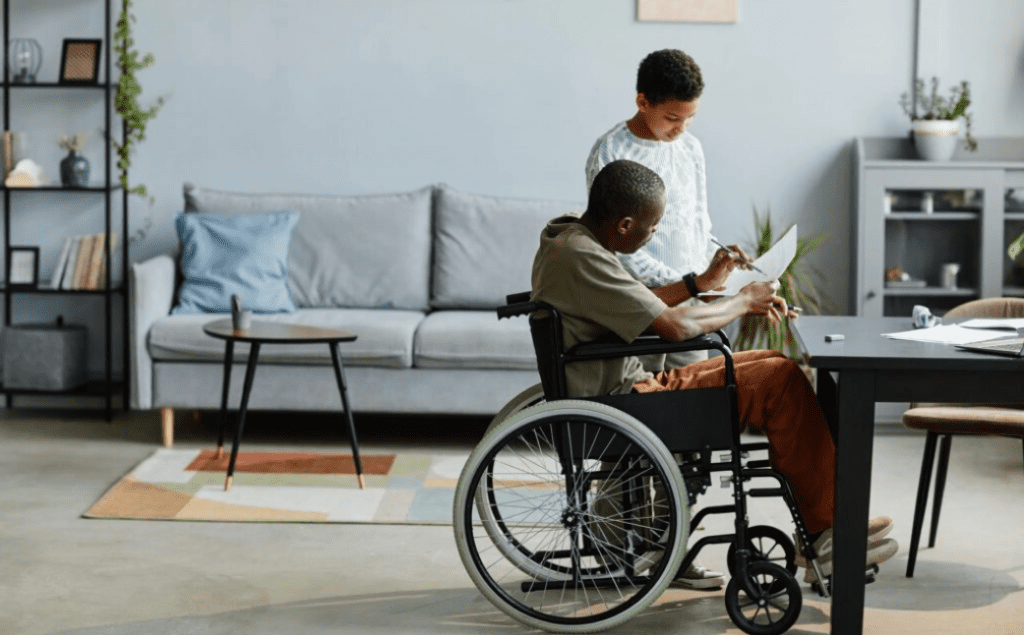How We Deliver High Yields by Doing What Others Won’t

Supported Independent Living (SIL) Property Solutions
“Stable Income with Flexible Investment Options”
Our SIL properties offer a flexible yet profitable option for investors in areas with significant SIL-funded participants. Unlike SDA housing, where funding is per participant, SIL funding is per lease, creating a steady income stream. This investment type is particularly well-suited to regions with less demand for SDA but a strong need for supported living.
We also offer hybrid models that combine SDA and SIL units in one property, ensuring stable SIL income alongside the higher yield of SDA. This approach maximises occupancy rates, providing consistent returns and minimising vacancy risks.

Benefits
- Reliable income per lease, independent of individual participants
- Hybrid models available for diversified income streams
- Ideal for investors seeking flexibility with stable returns
Explore Supported Independent Living Properties
Frequently Asked Questions
A Supported Independent Living (SIL) property provides a safe, accessible home for individuals who require assistance with daily activities. These properties allow residents to live independently while receiving the support they need, tailored to their specific requirements.
SIL is typically for individuals who need some level of daily assistance to live independently. This may include people with disabilities, older adults, or anyone who benefits from support in day-to-day living. Eligibility is often determined by assessments through social agencies or the National Disability Insurance Scheme (NDIS).
While SDA (Specialist Disability Accommodation) is a specific category within the NDIS scheme that focuses on high-needs accessibility requirements, SIL refers to the support services provided within a property. SIL properties may or may not be SDA-approved, as they are focused on offering supportive care rather than structural requirements. SDA properties tend to cater to participants with very high physical support needs, while SIL is aimed more broadly at those requiring daily assistance.
There are various types of demand in different areas, and it’s important to align with local needs. Some locations may have a strong demand for SIL while others might have a greater need for SDA. Building an SDA property where there’s low demand for high-needs accommodations could result in vacancies. Additionally, securing bank financing can sometimes be challenging if you’re solely focused on SDA. By building a hybrid property—one with both SIL and SDA components—you tap into both demand markets, making it a safer investment. This setup allows you to pursue the high returns associated with SDA while also benefiting from the steady income of SIL on the other side.
SIL properties offer daily support for tasks such as personal care, meal preparation, household chores, medication management, and accessing the community. The level of support is tailored to meet each individual’s needs, ensuring a comfortable and independent living experience.
Yes, SIL properties represent a growing investment opportunity due to the demand for disability support housing. Investors need to understand the requirements of SIL-approved properties, including necessary building standards and regulations, and work with professionals who specialise in this sector.
Investing in SIL properties can provide reliable, long-term rental income, as demand for accessible and supportive housing remains high. Additionally, SIL properties allow investors to contribute positively to their communities by supporting people in need of a safe, supportive environment.
Yes, SIL properties must meet accessibility and safety standards. These vary by location but typically include features such as wheelchair access, emergency safety systems, and other modifications to support residents’ daily needs. Consulting with experts ensures compliance and maximises investment potential.
SIL properties are built or modified specifically to meet the needs of individuals requiring daily support. They include accessibility aids, larger bathrooms, and other modifications that standard rentals typically don’t provide. This makes them suitable for tenants who need a supportive living arrangement.
